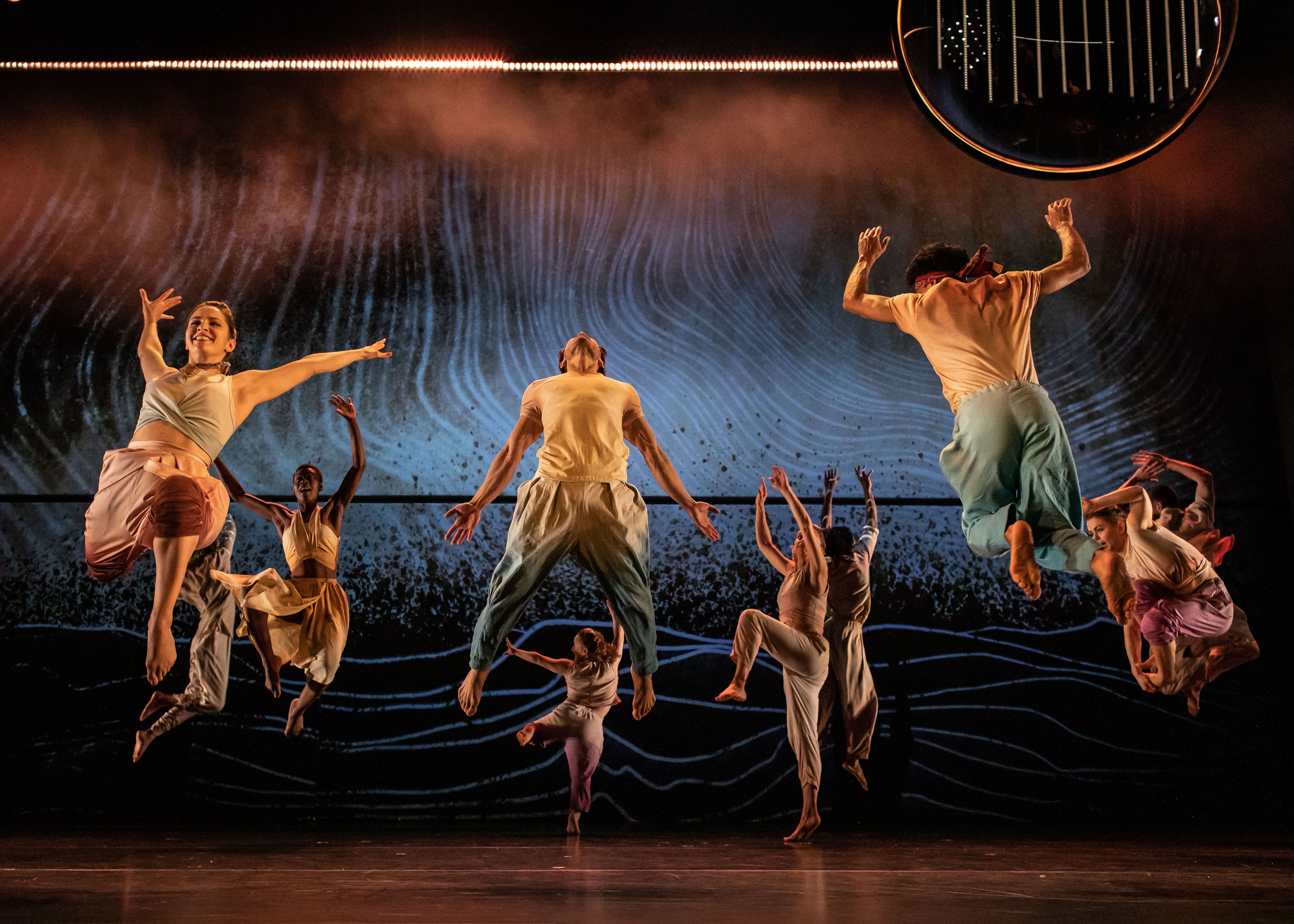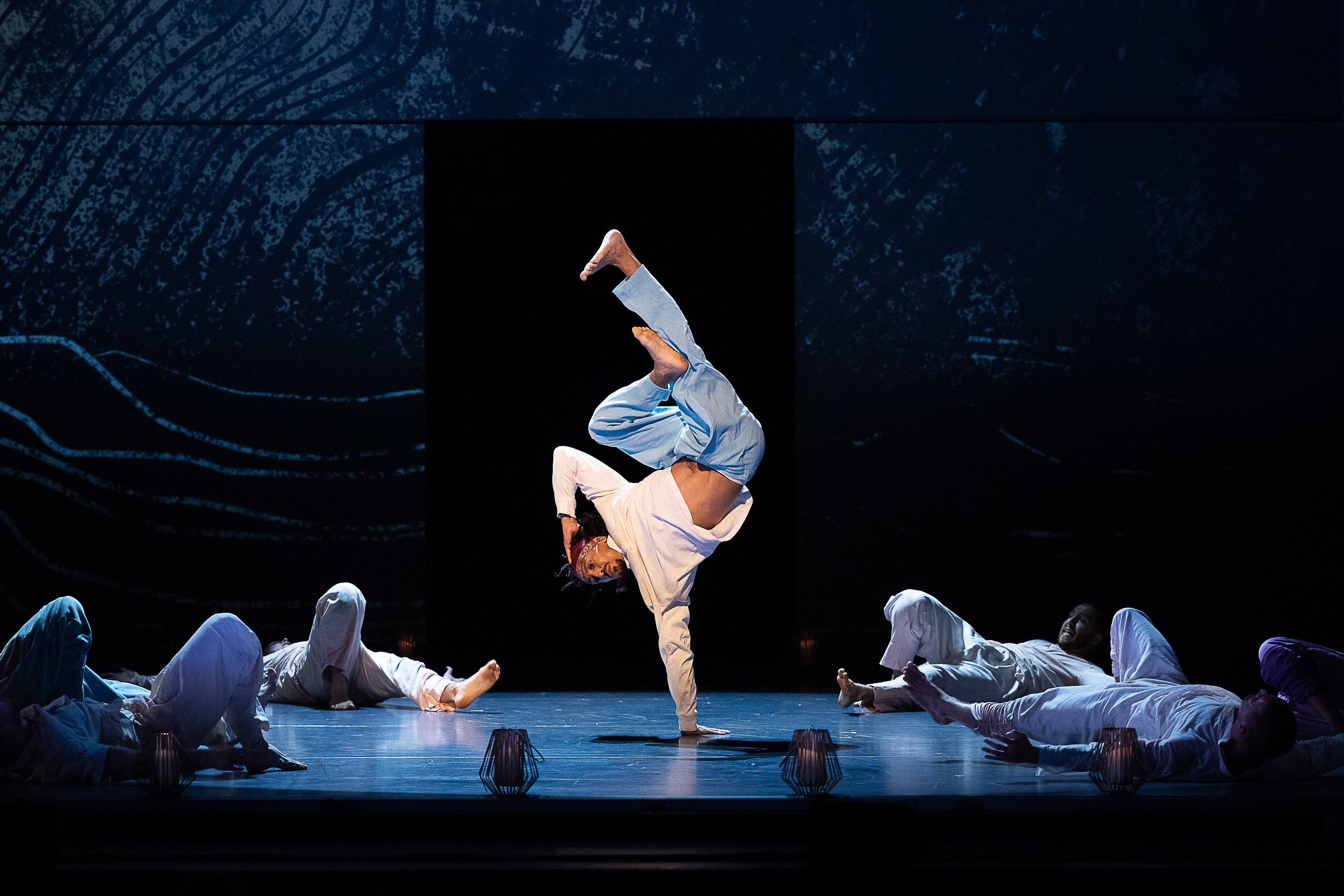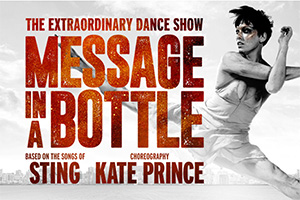Review: Message in a Bottle, a Story of War and Refuge Told Through the Music of Sting
Kate Prince’s brilliant ZooNation dance company dazzles at New York City Center.

(© Helen Maybanks)
There is an apocalyptic feel to the song “King of Pain” with its disturbing imagery of a tattered flag in the wind and a skeleton choking on a crust of bread. Sting originally sang it as the lead for the Police, but it finds a new context in Message in a Bottle, a dazzling dance-centric musical (much like Broadway’s Illinoise) now running through Sunday at New York City Center following a West End run in 2019.
It’s an eerily appropriate selection — one of 27 songs from Sting’s solo career and time with the Police — that helps tell the story of a family torn apart by war. Not all these numbers fit well thematically into Lolita Chakrabarti’s book, but that seems less important in a piece that brims with Kate Prince’s breathtaking choreography and an extraordinary troupe of dancers who set the stage on fire.
The story takes place in an unspecified time and location, though Anna Fleischle’s costumes suggest somewhere in the Middle East. A father, mother, and three children lead a comfortable life until bombs begin to fall (Natasha Chivers’s lighting and David McEwan’s sound create ominous explosions in the distance). The family is separated, and the children are sent to a camp where they suffer abuse and humiliation from the guards. They are eventually freed and start lives in different cities before they are reunited.

(© Christopher Duggan)
Hamilton’s Alex Lacamoire signed on to do new arrangements for the songs, which run the gamut of Sting’s big hits, from “Every Little Thing She Does Is Magic” to “Fields of Gold” (the music is recorded rather than performed live). Working with Chakrabarti’s book, Lacamoire’s selections illuminate the story line in plausible, if occasionally strained, ways. Some songs are on the nose, such as the war-themed “Invisible Sun” and the claustrophobic “Every Breath You Take.” Others are heavy-handed. “Roxanne” is predictably set in a gratuitous red-light district scene, and “Don’t Stand So Close to Me,” about a teacher’s attraction for a student, is a bridge too far in the context of the abduction and rape of women during wartime.
What makes up for the story’s shortcomings is the electric dance troupe ZooNation, who are executing some of the most exciting choreography in New York right now. As the father, Gavin Vincent (at the performance I attended) turns break-dancing into a kind of ballet, and Lukas McFarlane shows bona fide balletic skills with eye-popping pirouettes. As the other members of the family, Deavion Brown, Natasha Gooden, and Daniella May bring unflagging energy to Prince’s intricate choreography.
Set designer Ben Stones and video designer Andrzej Goulding enhance the production with captivating stage effects. A large ball filled with sand streams its contents onto the stage as though the family is experiencing the end of time, and it later hovers over the stage like an eclipse of the sun. Goulding’s projections help set scenes as well, but also allow for playfulness accompanied by songs like “The Bed’s Too Big Without You.”
Hopeful and feel-good as the story’s ending is, it’s impossible not to think about those enduring catastrophic suffering from actual wars right now. Even as we’re entertained, we remember that, unlike the show’s unnamed family, not all will be reunited. That should be a big message here.










